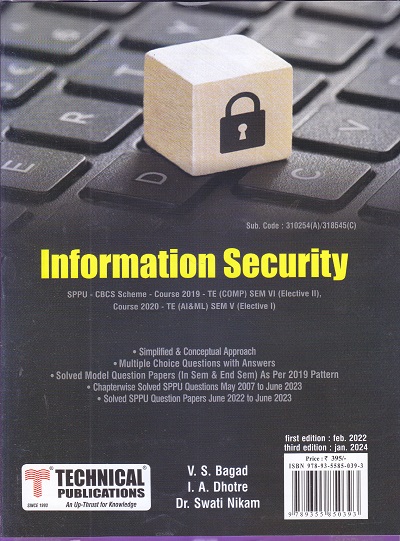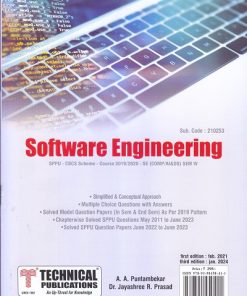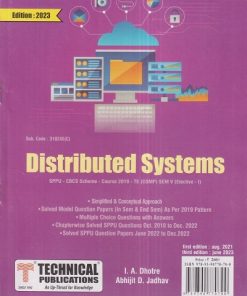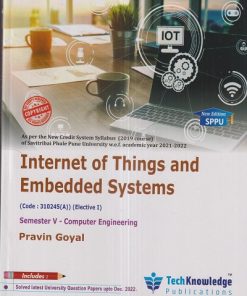| Unit I Introduction to Information Security
Foundations of Security, Computer Security Concepts, The OSI Security Architecture, Security attacks, Security services, Security mechanism, A Model for Network Security. (Chapter – 1)
Unit II Symmetric Key Cryptography
Classical Encryption Techniques : Stream Ciphers, Substitution Techniques : Caesar Cipher, Mono alphabetic Ciphers, Play fair Cipher, Hill Cipher, Poly alphabetic Ciphers, Transposition Techniques, Block Ciphers and Data Encryption standards, 3DES, Advanced Encryption standard. (Chapter – 2)
Unit III Asymmetric Key Cryptography
Number theory : Prime number, Fermat and Euler theorems, Testing for primality, Chinese reminder theorem, discrete logarithm, Public Key Cryptography and RSA, Key Management, Diffie-Hellman key exchange, El Gamal algorithm, Elliptic Curve Cryptography. (Chapter – 3)
Unit IV Data Integrity Algorithms And Web Security
Cryptographic Hash Functions : Applications of Cryptographic Hash Functions, Two Simple Hash Functions, Requirements and Security, Hash Functions Based on Cipher Block Chaining, Secure Hash Algorithm (SHA), SHA-3, MD4, MD5. Message Authentication Codes : Message Authentication Requirements, Message Authentication Functions, Requirements for Message Authentication Codes, Security of MACs. Digital Signatures : Digital Signatures, Schemes, Digital Signature standard, PKI X.509 Certificate.
Web Security issues, HTTPS, SSH, Email security : PGP, S/MIME, IP Security : IPSec. (Chapter – 4)
Unit V Network and System Security
The OSI Security architecture, Access Control, Flooding attacks, DOS, Distributed DOS attacks Intrusion detection, Host based and network based Honeypot, Firewall and Intrusion prevention system, Need of firewall, Firewall characteristics and access policy, Types of Firewall, DMZ networks, Intrusion prevention system : Host based, Network based, Hybrid.
Operating system Security, Application Security, Security maintenance, Multilevel Security, Multilevel Security for role based access control, Concepts of trusted system, Trusted computing. (Chapter – 5)
Unit VI Cyber Security and Tools
Introduction, Cybercrime and Information Security, Classification of Cybercrimes, The legal perspectives-Indian perspective, Global perspective, Categories of Cybercrime, Social Engineering, Cyber stalking, Proxy servers and Anonymizers, Phishing, Password Cracking, Key-loggers and Spywares, The Indian IT Act-Challenges, Amendments, Challenges to Indian Law and Cybercrime Scenario in India, Indian IT Act. (Chapter – 6) |



 Zoom
Zoom











Reviews
There are no reviews yet.